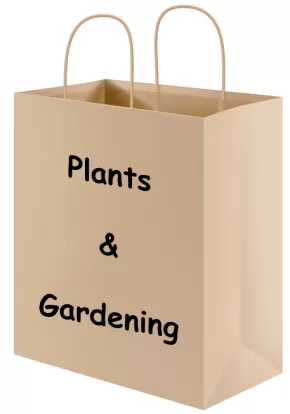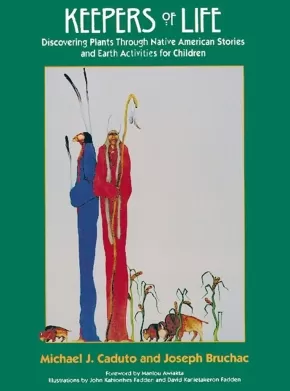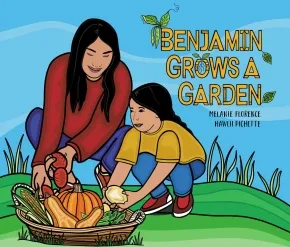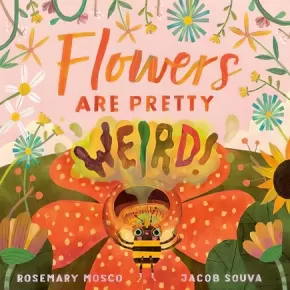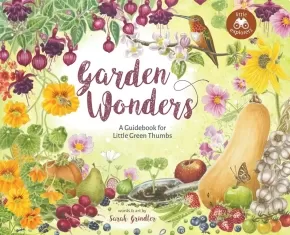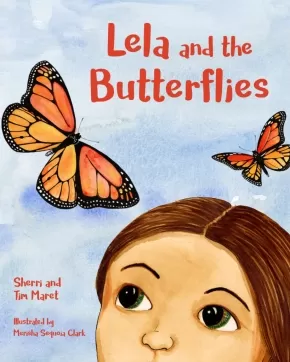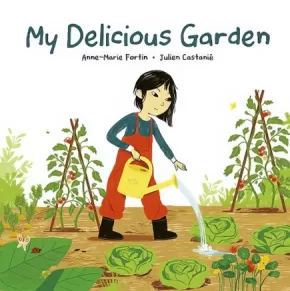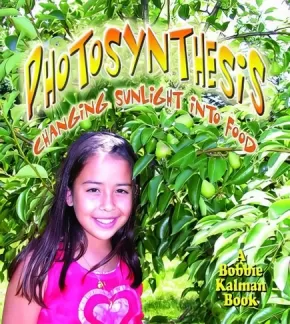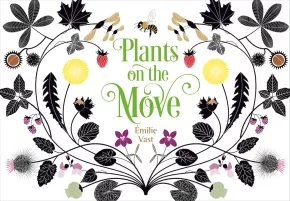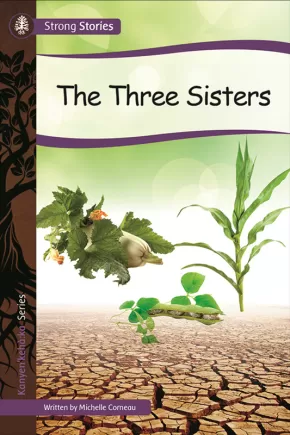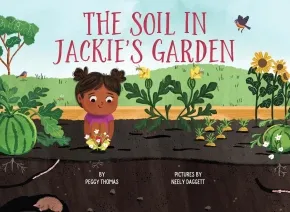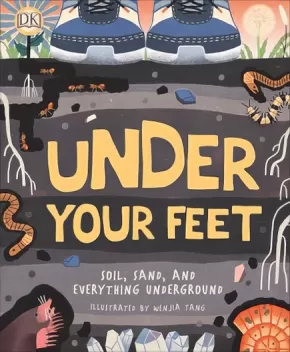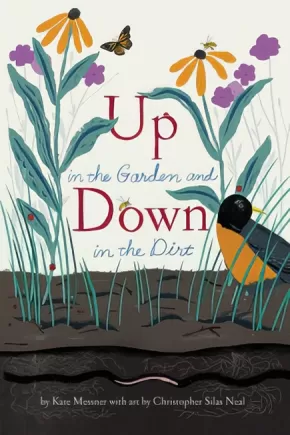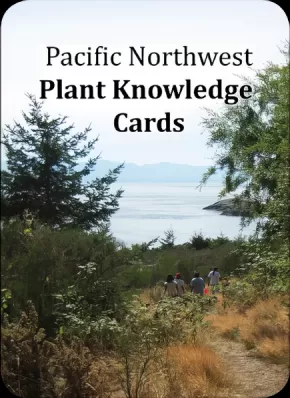
Learn at Home-Homeschool Theme Bundle: Plants & Gardening
$346.89
Text Content Territories:
Indigenous Canadian; First Nations; Kwakwaka'wakw (Kwakiutl); Haudenosaunee (Iroquois); Kanyen'keha:ka (Mohawk); Indigenous American; Native American;
Status: In Stock
Other Categories:
Strong Nations Bundles | Learn at Home / Homeschool Bundles | Environmental Awareness
Details:
This Learn at Home/Homeschool Theme Bundle includes resources for learning about plants, gardening, and the importance of pollinators. Many of the resources included will encourage the entire family to get outside and partake in some gardening or nature activities, such as identifying plants!
Educator Information
Included in our Learn at Home/Homeschool Theme Bundles are fiction and nonfiction titles. Some are independent reads, some are read alouds, and some may provide parent/caregiver support or are an interactive title full of activities. As well, some of the bundles contain a puppet, game, or other learning resources.
This bundle is useful for a variety of ages and learners. Review individual items below to ensure they are a good fit.
Indigenous and non-Indigenous resources may be included. Scroll below to learn more about individual items included. Resource availability may fluctuate.
● The listed materials for this bundle
can be purchased as a full bundle or separately. To purchase the full bundle click on the "Add to
Basket" button above (the first one on this page).
● To purchase items individually, click the "Add to Basket" buttons below, beneath the individual
item titles.
Parent & Family Resources
Keepers of Life: Discovering Plants through Native American Stories and Earth Activities for Children
$31.95
Format:
Paperback
Text Content Territories:
Indigenous American; Native American;
ISBN / Barcode: 9781555913878
Synopsis:
Synopsis:
The first paperback edition of Keepers of Life from the incredibly popular Keepers series.
These bestselling books have been long-time favourites with educators for their innovative approach to teaching children about Native cultures and the environment. Each book, co-authored by Joseph Bruchac and Michael J. Caduto, combines Native legends with information and activities about the natural world.
Reviews
"This book is an excellent school resource for introducing children to Indigenous worldviews. It is comprised of 18 story packages which may be used as teaching tools in the classroom. The stories are divided by subject nature and include one introduction story, two stories about creation, one about celebration, thanksgiving and stewardship, eight about flowers and fruits, seeds and spores, five about survival, and one about healing our relations. Each traditional story acknowledges the Native North American cultures in which the story originated. An accompanying map helps readers situate where these different cultural groups traditionally resided. The stories are typically one to three pages long, making them ideal for sharing in the oral tradition. The stories are accompanied by beautiful black and white ink drawings, artistically representing the events and characters in each story. Following each story is a discussion prompt to help teachers explain the story’s context. The discussion prompts relate the story to Native North American traditional worldviews and emphasize mankind’s interconnection with the natural world." - Rachel Yaroshuk, CM Magazine
Educator & Series Information
Books in the Keepers series are recommended by educational journals across North America for children aged 5 to 12.
Included at the end of the book is a Glossary and Pronunciation Key to Native North American Words and Names.
Foreword by Marilou Awiakta.
Additional Information
288 pages | 8.17" x 10.73"
Native American Gardening: Stories, Projects, and Recipes for Families
$41.44
Format:
Paperback
Text Content Territories:
Indigenous American; Native American;
Reading Level: N/A
ISBN / Barcode: 9781555911485
Synopsis:
Synopsis:
Learn how to plan and prepare a garden site, celebrate the harvest, create traditional gardens, such as the "˜Three Sisters Garden" of corn, beans, and squash, and make Native American crafts such as gourd rattles and corn husk dolls, and use its many recipes to cook Native meals.
Additional Information
176 pages | 1.11" x 1.11"
Books for Children
Benjamin Grows a Garden
$21.99
Artists:
Format:
Hardcover
Text Content Territories:
Indigenous Canadian; First Nations; Cree (Nehiyawak);
ISBN / Barcode: 9781525303210
Synopsis:
Synopsis:
Readers follow along step-by-step as Benjamin plants and cares for his garden and imagines the harvest to come.
Benjamin loves springtime. The grass grows bright green, the birds sing sweet songs and, best of all, Benjamin and his mother start their garden. In just the right order, they plant mahtâmin (corn), pîmiciwacis (beans), and osawipak (squash) for Three Sisters Soup. They plant strawberries to serve with bannock, then zucchini, tomatoes, cucumbers. Benjamin and his mom lovingly tend to the garden and watch it grow into a plentiful harvest with enough to share. Throughout the whole summer, Benjamin dreams about the fall, when they’ll have all the ingredients for a feast – and everyone will be invited!
In this heartwarming story, award-winning author Melanie Florence evocatively portrays the pleasures and rewards of growing and sharing food. The steps of the gardening process – digging holes, planting seeds, watering – are carefully described, and the yearly cycle of growing, harvesting, eating and then starting again the next year is emphasized. Special attention is paid to the tradition of planting corn, beans and squash together so that each plant by its nature helps the others grow. Benjamin and his mother use Cree words throughout the story, and a pronunciation guide is included at the back of the book for further inquiry. Vivid illustrations by Hawlii Pichette make this a perfect follow-up to the author and illustrator duo’s previous book, Benjamin’s Thunderstorm.
Reviews
"A comforting tale of cohabitation between humans and nature." — School Library Journal, April 2025
Educator Information
Recommended for ages 3 to 7.
Includes Cree words throughout the story. A pronunciation guide is included at the back of the book.
Curriculum Connections: Caring; Growth and changes in plants; Indigenous peoples; Patience; Plants; Word recognition
This book is part of the Benjamin Outdoors series. From dancing in the rain with thunder for a drum to planting a vegetable garden with his mom, Benjamin loves being in nature. With evocative text and vibrant art, this delightful picture book series celebrates the joys of spending time outdoors and weaves in nature-related Cree words.
Additional Information
40 pages | 10.00" x 8.50" | Hardcover
Flowers Are Pretty ... Weird!
$24.99
Editors:
Format:
Hardcover
ISBN / Barcode: 9780735265943
Synopsis:
Synopsis:
Warning -- this book contains top-secret information about flowers! Prepare to be shocked and weirded out by this hilarious and totally true picture book introduction to some of nature's strangest plants.
Flowers are beautiful. They have bright colors, soft petals and sweet nectar. Yum! But that's not the whole truth. Flowers can be WEIRD . . . and one bee is here to let everyone know! Talking directly to the reader, a bee reveals how flowers are so much stranger than what we think. Did you know that there are some flowers that only bloom in the nighttime? Some flowers are spooky, and look like ghosts, or bats, or a monster's mouth. And while most flowers smell good, there are some that smell like dead meat, or even horse poop!
This hilarious and refreshing book with silly and sweet illustrations explores the science of flowers and shows that these plants are not always stereotypically pretty and harmless as we often think they are -- they are fascinating, disgusting, complicated and amazing.
Educator & Series Information
Recommended for ages 4 to 8.
This book is part of the Nature's Top Secrets series.
Keep the Conversation Going
Here are some ideas, activities and questions to consider after you’ve read the book:
- Start a “TOP SECRET” folder of your own to catalog weird information about flowers.
- Some flowers look like cute animals; some resemble ducks or doves or monkeys.
- Pick your favorite animal and draw a flower based on it.
- Why do you think a bee was the narrator for this book? Research to find out more about bees and their relationship with flowers.
Additional Information
36 pages | 9.00" x 9.00" | Hardcover
Garden Wonders: A Guidebook for Little Green Thumbs
$19.95
Artists:
Format:
Hardcover
ISBN / Barcode: 9781774711439
Synopsis:
Synopsis:
Part of the Little Explorers series, this book shows young readers how to garden everything from flowers to veggies — and offers tips and tricks for keeping it all in bloom.
Let's get our hands dirty!
Whether you have a big backyard or pots on a balcony, you can grow just about anything if you have healthy soil, plenty of water, and bright sunlight. This book in the Little Explorers series takes young readers through every step to creating their own garden: from collecting nutrient-rich soil and choosing the right time of day to water your plants, to identifying helpful critters from unwanted pests. Featuring new vocabulary words like "germinate," "fertilizer," and "pollinator," and encouraging a microscopic look at nature, this is the perfect book for curious little gardeners.
What will you grow first?
Educator & Series Information
Recommended Ages: 4-8
This book is part of the Little Explorers Series.
Additional Information
32 pages | 8.00" x 6.50"
Lela and the Butterflies
$20.95
Artists:
Format:
Hardcover
ISBN / Barcode: 9781630763824
Synopsis:
Synopsis:
Lela loves butterflies. When Lela takes a nature walk with Ranger Maggie, she learns that butterflies need help. Lela's small steps in butterfly conservation start with a butterfly garden of nectar and host plants, but she doesn't stop there and ends up spreading her love for butterflies throughout the community. A simple guide to planting a butterfly garden is also included.
Reviews
Beautifully written and illustrated, Lela and the Butterflies is jam-packed with interesting facts about butterfly biology, ecology and butterfly gardening, craftily woven into the story of a little girl named Lela who loves butterflies. The book is so entertaining and appealing that readers young and old will acquire butterfly knowledge without even realizing that they are learning. - Johanna Davey, Hershey Gardens
Educator Information
Recommended for ages 5 to 9.
Additional Information
32 pages | 8.49" x 10.36"
My Delicious Garden
$18.95
Artists:
Format:
Hardcover
ISBN / Barcode: 9781771474689
Synopsis:
Synopsis:
A girl lovingly tends to her garden through the seasons.
In the depths of winter, one young girl is already dreaming of planting her very own vegetable garden. In January, she sketches out the rows of lettuce, the trellis for the peas, and a large plot for the tomatoes while she waits for warmer weather. March is time for sowing, and April gives way to the first leaves of her seedlings.
As the seasons change from spring to summer, she (with the help of her moms) spreads compost and turns up the soil to finally plant her veggies into the earth. As the months go by, she lovingly weeds, waters, and cares for her garden until it’s time to harvest a bounty big enough to share with all their friends! My Delicious Garden celebrates the joy of growing food from seed and is a cozy exploration of the connections between nature, food, and community.
Reviews
"The unique monthly focus is an interesting and helpful take on gardening; readers will learn about different types of vegetables and flowers equally. Whether there is a garden at school or not, this is a charming addition to the shelves and could be adapted to a very early science lesson for preschoolers, too." — School Library Journal
"All children will be inspired to grow their own gardens, and those children who live in urban environments will understand and appreciate the work, time, and patience, not to mention the joy and sense of accomplishment, it takes to maintain a garden." — School Library Connection
Educator Information
Recommended for ages 4 to 8.
Keywords and Themes: Gardening, Science, Nature, Cooking, Food, Outdoor Activities, Outdoor Learning
Additional Information
24 pages | 9.00" x 9.00" | Hardcover
Photosynthesis: Changing Sunlight Into Food
$9.95
Format:
Paperback
ISBN / Barcode: 9780778723080
Synopsis:
Synopsis:
Photosynthesis is the basis for all life on Earth! This exciting and sensitive book looks at how plants use a gas that is poisonous to people and animals to create food and oxygen for all creatures with the help of the Sun. Children will be amazed by the little chloroplast factories inside the leaves of plants and become aware of how important plants really are! Children of all ages will love this book!
Topics include:
a) the basic parts of plants, including roots, stems, and leaves and their jobs
b) the ways in which plants have adapted to perform photosynthesis in deserts
c) ocean photosynthesis
d) how energy from plants is passed along food chains
Educator Information
Recommended ages: 7-10
Additional Information
32 pages | 8.42" x 9.50"
Plants on the Move
$22.99
Artists:
Format:
Hardcover
ISBN / Barcode: 9781623541484
Synopsis:
Synopsis:
Spinning, flying, crawling, exploding! These plants have places to go. A gorgeous, lyrical exploration of how seeds travel from plant to plant, take root, and grow.
When you think of a plant, you don't think of how it moves. But the feathery seeds of the dandelion fly to other gardens, strawberry tendrils creep, and maple seeds spin. There are many different ways plants move, not only as they grow, but in their quest to reproduce: falling, clinging, floating, burrowing--even exploding!
Fourteen plant journeys are chronicled, but more than sixty species are highlighed in Émilie Vast's fantastic and unique art style. Learn the scientific names for the different ways plants move.
Reviews
"Ten ways that plants move are described with detailed silhouette art and a moderate amount of text. The graphic art stands out beautifully within thin black frames against stark white pages. Bold green lettering and an appropriate plant image decorate each single-page chapter heading. The short chapters begin with a plant introducing itself by its common name. Sometimes a plant also addresses readers directly, as with the strawberry: “You know me well, and you love to eat my sweet, red fruit.” However, most of the plants’ supposed narrations move quickly into scientific explanations, including simple definitions of terms such as calyx, pollination, and samara. (Further definitions occur in the backmatter.) There is enough information contained here that the book will benefit from reading over multiple sittings. It excels as a reference book, especially since the graphic art is so clearly detailed that reluctant or beginning readers will be able to learn a great deal from the illustrations alone. The sequence about plant seeds traveling by animal excrement is amazingly graceful, informative, and subtle—in both words and art. Similarly, clear sequences of frames show such things as a winsome fox carrying and dropping a burr and a water lily’s fruit developing and decomposing. Groupings of 24 cultivated plants by place of origin—albeit stated as incomplete—jar with the omissions of Africa, North America, and Oceania. The few examples of human skin are light-complexioned. Leaf and learn." —Kirkus Reviews
"Even young children understand that seeds grow into new plants, but how do seeds reach the soil they need? Accompanied by crisp, stylized artwork set against a contrasting white background, this informational picture book, originally from France, introduces several ways that seeds disperse. The succinct, descriptive text is divided into sections according to the seed movement (e.g., flying, clinging, or being eaten). Each section, in turn, opens with a single or a few representative plants that explain the physical characteristics of themselves and their seeds in a first-person narrative before explaining the benefits of their seed dispersal process. A maple tree, for example, describes the “light, delicate wings” of its seeds that dry up in the fall into “little helicopters,” detach, and spiral down to the ground. A double-page spread at the end of each section offers a beautiful, visual summary of other plants that rely on the same method for their seeds." —Booklist
Educator Information
Recommended for ages 5 to 8
Additional Information
56 pages | 8.56" x 12.41" | Hardcover
Strong Stories Kanyen’keha:ka: The Three Sisters
 $9.95
$9.95

Format:
Paperback
Text Content Territories:
Indigenous American; Native American; Haudenosaunee (Iroquois); Kanyen'keha:ka (Mohawk); Indigenous Canadian; First Nations; Haudenosaunee (Iroquois); Kanyen'keha:ka (Mohawk);
ISBN / Barcode: 9781771741194
Synopsis:
Synopsis:
A long time ago, the land was very dry and no plants could grow. The people had become very hungry. The Creator heard the people and made three plants - Corn, Beans and Squash. This Kanyen'kehà:ka (Gan-yeh-ga-ha-ga) story is about how the Three Sisters saved the people then, and are still feeding people today! The Kanyen'kehà:ka is one of Six Nations that together are the Haudenosaunee.
Educator & Series Information
The Three Sisters is part of the Strong Stories: Kanyen’kehà:ka series. Strong Stories focus on different First Nation territories from across Canada and the United States. These stories reflect the belief that our stories are the roots of our people, our lands and our cultures. It is from our stories that we grow and become strong and proud.
This resource is also available in French: Les Trois Sœurs.
Additional Information
16 pages | 6.00" x 9.00" | ISBN: 9781771741194
Strong Stories Kwakwaka’wakw: Traditional Berry Picking
 $9.95
$9.95

Format:
Paperback
Text Content Territories:
Indigenous Canadian; First Nations; Kwakwaka'wakw (Kwakiutl);
ISBN / Barcode: 9781771743136
Synopsis:
Synopsis:
Kwakwaka’wakw (kwok-wok-ya-wokw) people harvest many types of berries. We are careful to take care of our berries in the forest. What do you take care of in the forest?
Educator & Series Information
Recommended for intermediate students (grades 4-6).
Traditional Berry Picking is part of the Strong Stories: Kwakwaka’wakw series. Strong Stories focus on different First Nation territories from across Canada and the United States. These stories reflect the belief that our stories are the roots of our people, our lands and our cultures. It is from our stories that we grow and become strong and proud.
Additional Information
16 pages | 6.00" x 9.00" | ISBN: 9781771743136
The Soil in Jackie's Garden (1 in Stock - Out of Print)
$24.95
Artists:
Format:
Hardcover
ISBN / Barcode: 9781948898164
Synopsis:
Synopsis:
Join Jackie and her garden friends in this charming picture book as they discover the wonders of gardening, soil secrets, and the magic of composting.
Jackie and her garden friends embrace the joys of planting a garden, nurturing and harvesting their own food, and recycling scraps to compost, ensuring that the magical cycle of growth and sustainability continues anew.
Science facts about soil, plants, pollinators, decomposers, and more are included on every spread.
A fantastic book to engage young readers in becoming environmental stewards, learning how to care for a garden, understanding a plant life cycle, discovering the power of pollinators and the importance of composting.
Written in the cumulative style of "The House that Jack Built," this playful celebration of how things grow, return to the earth, and grow again will inspire young readers to try their hands at gardening and composting.
Back matter includes information on the soil cycle and how to make a compost pile.
Educator Information
Recommended for ages 6 to 8.
Additional Information
32 pages | 11.00" x 8.50" | Hardcover
Under Your Feet: Soil, Sand, and Everything Underground
$18.99
Artists:
Format:
Hardcover
ISBN / Barcode: 9781465490957
Synopsis:
Synopsis:
Down where worms wriggle and microbes squirm, there's a whole world waiting to be discovered...
Under Your Feet delves beneath the Earth's surface and explores the diverse wonders hidden there. Encounter creatures of the deep and marvel at the mind-boggling size of the humongous fungus - the biggest organism in the world. Learn how one handful of ordinary soil contains more organisms than there are people on Earth, and carry out experiments using dirt from your own back garden.
Under Your Feet offers you the opportunity to expand your knowledge of the natural world and soil-dwelling creatures big and small. Bursting with colorful illustrations and photography, this is the perfect book for budding young plant experts, animal fanatics, and geologists, and anyone who is curious about the ground we walk on.
Educator Information
Recommended for ages 5 to 8.
Additional Information
64 pages | 9.31" x 11.31" | Hardcover
Up in the Garden and Down in the Dirt
$14.99
Artists:
Format:
Paperback
ISBN / Barcode: 9781452161365
Synopsis:
Synopsis:
This sweet exploration of the hidden world and many lives of a garden through the course of a year "could not be more lovely," according to the Washington Post. Up in the garden, the world is full of green—leaves and sprouts, growing vegetables, ripening fruit. But down in the dirt there is a busy world of earthworms digging, snakes hunting, skunks burrowing, and all the other animals that make a garden their home. In this exuberant and lyrical book, discover the wonders that lie hidden between stalks, under the shade of leaves...and down in the dirt.
Reviews
'Will have readers itching to get their hands dirty.' —The Baltimore Sun
'Enchanting. . . . A beautiful, informative addition to any collection.' —School Library Journal
Educator Information
Recommended for ages 5 to 8.
Additional Information
56 pages | 8.00" x 12.00" | Paperback
Plant Knowledge Cards & Plant Memory Matching Game
Pacific Northwest Plant Knowledge Cards
 $39.95
$39.95

Country of Origin:
Size:
3.625 inches x 5 inches
Text Content Territories:
Indigenous American; Indigenous Canadian;
ISBN / Barcode: 9781771743457
Synopsis:
Synopsis:
This 72 card set highlights 65 edible and medicinal plants. The cards describe traditional Indigenous uses and ways of harvesting each plant and feature several Indigenous languages.
Take the cards out on walks to help identify plants and their uses and keep the old ways strong. Use these cards as an inspiration to talk to an Elder or Knowledge Keeper!
Educator Information
72 edible and medicinal plant cards are found within these categories: Tree, Berry, Flower, Shrub, and Plant.
A percentage of proceeds is donated to the Pepaken Hautw Foundation to support their efforts in land-based education and ecosystem restoration. To find out more, please visit https://www.pepakenhautw.com/.
Additional Information
72 Card Set | 3.625" x 5" | ISBN: 9781771743457
Strong Learners Memory Matching Cards: Indigenous Plants
 $14.95
$14.95

Size:
4.5 inches x 3.5 inches
ISBN / Barcode: 459312866017
Synopsis:
Synopsis:
This Indigenous Plant Memory Matching Card Game contains 25 cards, including 1 instructional card and 2 each of the following:
1. Bitter-root
2. Blue Camas
3. Burdock
4. Cat-tail
5. Devil’s Club
6. Fireweed
7. Kinnikinnick
8. Licorice Fern
9. Oregon Grape
10. Soapberry
11. Stinging Nettle
12. Tiger Lily
Educator Information
At Strong Nations, we strive to provide meaningful learning opportunities for all learners with our products. Our Strong Learners products can work both independently, or to support our Strong Nations books.
Memory Matching Card Games support young learners to develop and strengthen their ability to recall information. Some other benefits include:
· social interaction
· improve concentration
· pay attention to detail
· turn taking
· brain exercise
· ability to stay focused
These cards are printed on Stone Paper. This eco-friendly paper alternative is made from stone, not trees! Stone Paper is tear-resistant, uses no lamination, and does not use trees, water, or harmful chemicals and dyes in its production. The cards are also biodegradable. While they can be used outside, store cards in the shade or away from direct sunlight.
Card Game Creator: Terri Mack
Additional Information
25 cards per set | 4.5" x 3.5" | ISBN: 459312866017

 Go
Back
Go
Back